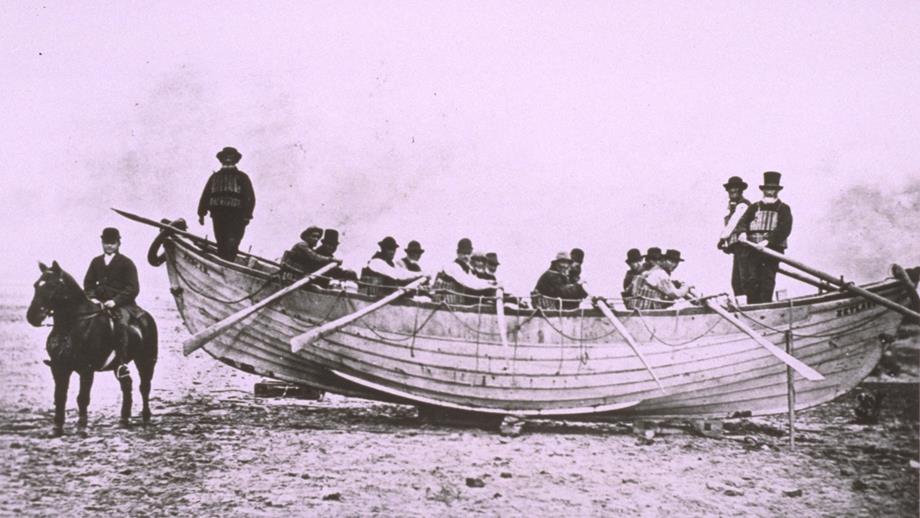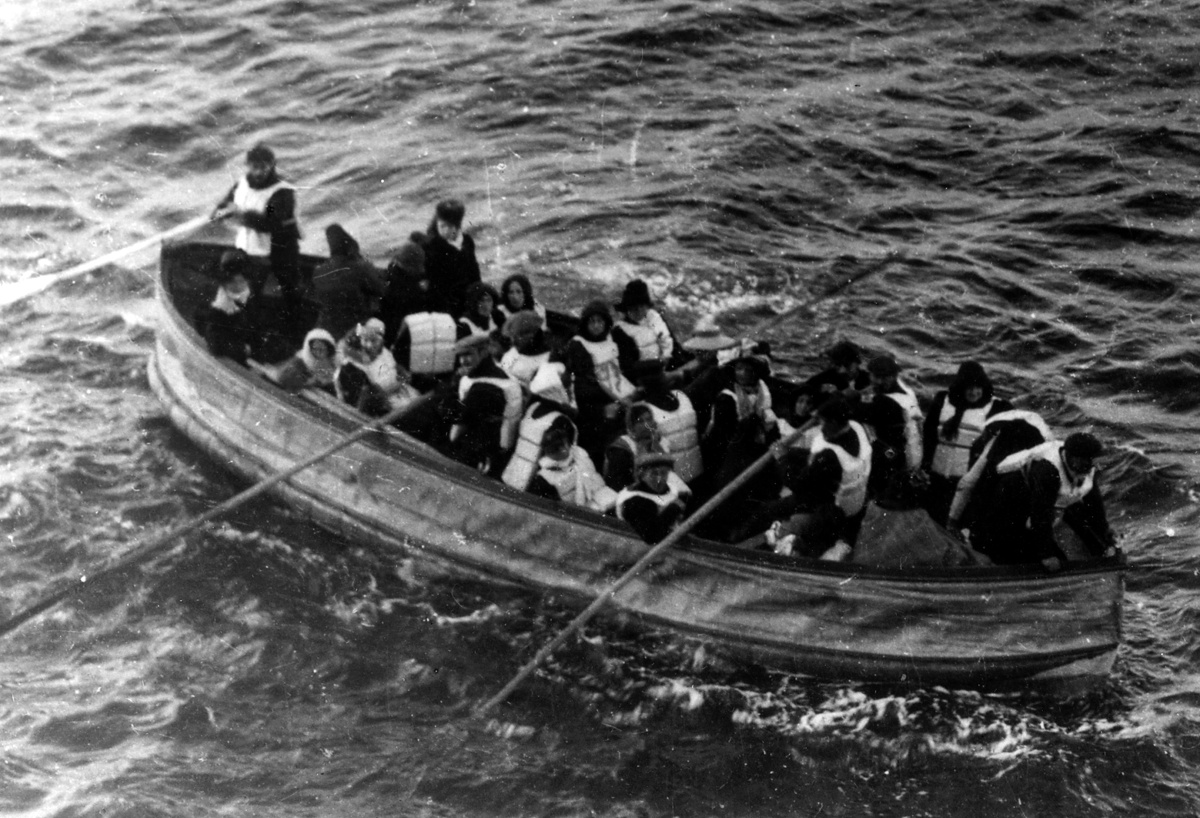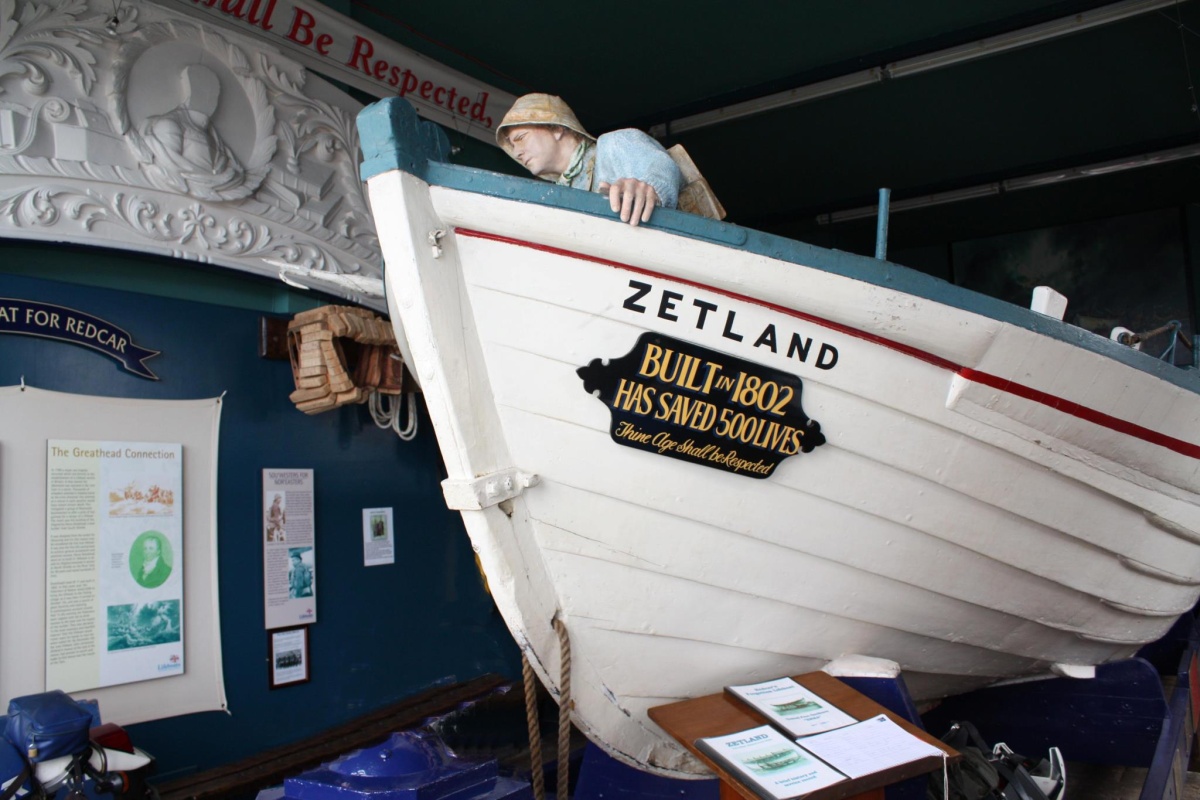The lifeboat, named “Original” is stationed at the mouth of the Tyne and, from now on, it can be launched from a shore station for any rescue operations at sea.

______________________________________________________________________________________
Truly speaking, this was not a real lifeboat as we know it today. But this is how the story of lifeboats has started. So what happened before and what led to the start of creation of a special craft for rescuing people? We’ll get back to it later, but first…
General information
Lifeboats have been a crucial tool for sailors and seafarers throughout history. These vessels are designed to provide a safe means of escape in case of emergency situations such as shipwrecks, storms, or other disasters that may occur at sea.18th century
In the early days of lifeboats, they were often launched from shore or from nearby ships. Today, many modern vessels are equipped with their own lifeboats, which can be launched quickly and efficiently in the event of an emergency. These boats are typically stored in specialized compartments on board the ship and can be launched using a hydraulic system (Davit cranes for lifeboats) or free-fall method.19th century
In the mid-19th century, lifeboats were fitted with engines, which made them faster and more efficient. This was not any more a water craft for rescue operations, or for transporting goods and people between ships and shore. They became more specialized and were designed to meet specific needs. Simply saying they became what we know today as the lifeboat.This was the time, when the first lifeboat association, Britain's National Institution for the Preservation of Life from Shipwreck (later renamed the Royal National Lifeboat Institution), was organized in 1824. By 1860, the RNLI could claim to have saved more than 12,000 lives at sea.
20th century
One of the most significant developments in the history of lifeboats was the introduction of the self-righting mechanism in the 20th century. This innovation allowed a capsized lifeboat to automatically right itself, ensuring that the crew and passengers would not be trapped underneath the boat. This was a significant improvement on earlier designs, which were often unable to right themselves and would remain capsized until rescued.Today, lifeboats continue to be an essential tool for sailors and seafarers around the world. They are designed to be durable, reliable, and capable of withstanding the harsh conditions that can be encountered at sea. They are also equipped with advanced technology and safety features, making them more effective than ever before.
Lifeboats use cases
Lifeboats have played an important role in numerous rescue operations over the years. One notable example is the sinking of the RMS Titanic in 1912. While the ship itself did not have enough lifeboats to accommodate all of the passengers and crew, the lifeboats that were available were instrumental in rescuing many of those who survived the disaster.
Another notable use of lifeboats occurred during the Second World War. Lifeboats were used to rescue sailors and soldiers who had been stranded at sea after their ships were sunk by enemy attacks. Many of these operations were carried out under extremely dangerous conditions, with lifeboats often having to navigate through minefields and other hazards.
… A story that is more than 230 years old
And now, let’s get back to the story of the first lifeboat ever.It all started back in 1789, when the Adventure ship ran aground during a savage storm near the Tyne River mouth. All eight members of the team were in sight of the people on the shore, but no one could help. This incident inspired local businessmen of South Shields to offer a prize for anyone who could design a true rescue boat for a reward of two guineas (less than three euros today).
William Wouldhave, a parish clerk, and Henry Francis Greathead, a shipbuilder, both won the prize: Wouldhave presented a tin model of a ship made of copper and cork that could sail in a stormy sea. Greathead's model was built from wood. The competition committee merged the two ideas, and Greathead built the final design.
The Original lifeboat was over 9 meters long and 3 meters wide, with enough room for 20 people. The ship was steered with two oars instead of a rudder, with 10 specially shortened oars to withstand storms. The boat's sides were lined with cork and reinforced with copper plates, which increased its buoyancy. And a curved keel made it easier to steer.

Greathead went on to build 31 lifeboats over the next 20 years. In 1802, he applied for a patent, only to discover that another Englishman, Lionell Lukin, had filed a similar patent for the same invention back in 1785. However, Greathead's design was still widely used.
As for the Original, the boat was stationed behind the coast station and saved hundreds of lives for forty years. By 1839, over 30 coast stations across the British Isles had adopted similar boats. The only surviving lifeboat of the original Greathead design is the Zetland, which served for 78 years and saved more than 500 lives. Today, it is kept in the lifeboat museum in Redcar.

Since Greathead's time, the importance of lifeboats has skyrocketed. Nowadays, sailors rely on a variety of specialized tools and equipment to keep them safe on the open seas, from pyrotechnics and survival gear to radio beacons that send out distress signals. Each of these is a must-have on board.
So, the next time you're out on the waves, remember that there might be a lifeboat you can rely upon.
Fair winds and following seas!






